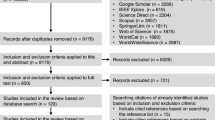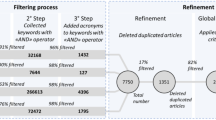Abstract
The present paper focuses on a new concept of evaluation of a performance index of hot forging dies through the combination of a process behaviour model and a reliability approach analysis of the forging process. The process behaviour is modelled and simulated using the computer-aided engineering FORGE® tool that allowed optimizing the forging parameters and determining the stresses and strains together with temperatures during the forging process and also identifying the factors affecting the die life. The respective reliability mechanical model is developed and reliability simulations have been conducted using PHIMECASoft tool in order to evaluate the reliability index β and determine the sensitivity of the variations in the random values of the input parameters of the forging process. The concept of this contribution has been applied to real industrial dies used to forge automotive steering levers produced in the forging workshop of the Ferrovial Company of Annaba in Algeria. The performance index is given by the number of forged parts corresponding to the reliability index of the dies before failure occurs.
Similar content being viewed by others
References
Šraml M, Stupan J, Potrč I, Kramberger J (2004) Computer-aided analysis of the forging process. Int J Adv Manuf Technol 23:161–168
Alimi A, Fajoui J, Kchaou M, Branchu S, Elleuch R, Jacquemin F (2015) Multi-scale hot working tools damage (X40CrMoV5-1) analysis on relation to the forging process. Eng Fail Anal 62:142–155
Bayramoglu M, Polat H, Geren N (2008) Cost and performance evaluation of different surface treated dies for hot forging process. J Mater Process Technol 205(1–3):394–403
Wei MX, Wang SQ, Wang L, Cui XH, Chen KM (2012) Selection of heat treatment process and wear mechanism of high wear resistant cast hot-forging die steel. J Iron Steel Res Int 19(5):50–57
Navinšek B, Panjan P, Gorenjak F (2001) Improvement of hot forging manufacturing with PVD and DUPLEX coatings. Surf Coat Technol 137:255–264
Khalilpourazary S, Dadvand A (2011) Design and manufacturing of a straight bevel gear in hot precision forging process using finite volume method and CAD/CAE technology. Int J Adv Manuf Technol 56:87–95
Tang J, Wu WT, Waiters J (1994) Recent development and applications of finite element method in metal forming. J Mater Process Technol 46(1–2):117–126
Brucelle O, Bernhart G (1999) Methodology for service life increase of hot forging tools. J Mater Process Technol 87:237–246
Tomov BI, Gagov VI, Radev RH (2004) Numerical simulations of hot die forging processes using finite element method. J Mater Process Technol 153–154:352–358
Arbak M, Tekkaya AE, Ozhan F (2005) Comparison of various preforms for hot forging of bearing rings. J Mater Process Technol 169:72–82
Hartley P, Pillinger I (2006) Numerical simulation of the forging process. Comput Methods Appl Mech Eng 195(48–49):6676–6690
Choi C, Groseclose A, Altan T (2012) Estimation of plastic deformation and abrasive wear in warm forging dies. J Mater Process Technol 212(8):1742–1752
Equbal MI, Kumar R, Shamim M, Ohdar RK (2014) A Grey-based Taguchi method to optimize hot forging process. Procedia Mater Sci 6(ICMPC):1495–1504
Majerus JN, Jen KP, Gong H (1997) Quantitative data for precision, closed-die, forging: internal deformations and computer simulations. Int J Mach Tools Manuf 37(4):523–554
Snape G, Clift S, Bramley A (2002) Parametric sensitivity analyses for FEA of hot steel forging. J Mater Process Technol 126:353–360
Allam Z, Becker E, Baudouin C, Bigot R, Krumpipe P (2014) Forging process control: influence of key parameters variation on product specifications deviations. Procedia Eng 81:2524–2529
Lavtar L, Muhič T, Kugler G, Terčelj M (2011) Analysis of the main types of damage on a pair of industrial dies for hot forging car steering mechanisms. Eng Fail Anal 18(4):1143–1152
Strano M (2007) A simplified methodology for estimating the variance of material properties. In: FE analysis under uncertainty of sheet and tube metal forming processes. AIP Conference Proceedings 908(1):499–504
Lemaire M, Pendola M (2006) PHIMECA-SOFT. J Struct Safe 28:130–149
Lemaître J, Chaboche JL (1990) Mechanics of solid materials. Cambridge University Press, Cambridge
Herbland T (2009) Une méthode de correction élastoplastique pour le calcul en fatigue des zones de concentration de contraintes sous chargement cyclique multiaxial non proportionnel. Thèse de doctorat, Mechanics. École Nationale Supérieure des Mines de Paris, France
CETIM (2009) Centre Technique des Industries Mécaniques, Guide méthodologique d’analyse pour les calculs des outillages avec le logiciel Forge. Code AP no. 015366. www.cetim.fr
Njeh F, Kchaou M, Elleuch R, El Halouani F (2012) Analysis of degradation and failure mechanisms that develop in hot forging die. J Fail Anal Prev 12(3):273–280
Kchaou M, Elleuch R, Desplanques Y, Boidin X, Degallaix G (2010) Failure mechanisms of H13 die on relation to the forging process—a case study of brass gas valves. Eng Fail Anal 17(2):403–415
Hansel A, Pittel T-S (1979) Kraft- und Arbeitsbedarf BildsomerFormgeburgs Verfahren. VEB Deutscher Ver-lang fur Grundstoffindustrie, Lipsk
Lemaître J, Chaboche JL (2014) Mechanics of solid materials. Cambridge University Press, Cambridge
Del A, Primo T, Strano M (2010) The use of FEA packages in the simulation of a drawing operation with springback, in the presence of random uncertainty. Finite Elem Anal Des 46(7):527–534
Bramley AN, Mynors DJ (2000) The use of forging simulation tools. Mater Des 21(4):279–286
FORGE3R (2002) FORGE3R reference guide release 6.2, Sophia-Antipolis
Author information
Authors and Affiliations
Corresponding author
Rights and permissions
About this article
Cite this article
Bendjoudi, Y., Becker, E., Bigot, R. et al. Contribution in the evaluation of a performance index of hot forging dies. Int J Adv Manuf Technol 88, 1187–1201 (2017). https://doi.org/10.1007/s00170-016-8829-4
Received:
Accepted:
Published:
Issue Date:
DOI: https://doi.org/10.1007/s00170-016-8829-4




